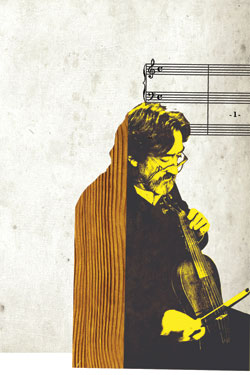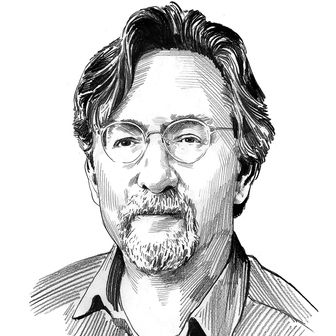
W e know what he looked like, Cervantes’ addled cavalier: helmeted with a washbasin, fitted out in shopworn armor, tottering astride his scrawny horse, glaring with inflamed eyes at a world he perpetually misconstrued. But Cervantes also wanted us to know what the travels of Don Quixote de la Mancha sounded like. The novel is larded with the texts of ballads, both traditional and new. The knight may not know a château from a windmill, but he sings (“with a voice a little hoarse but full-toned”), composes, listens, and plays a passable lute. His exploits include lively musical entertainments, like the serenade interrupted by a sackful of cats with bells tied to their paws.
The Catalan master of antique music, Jordi Savall, and his ensemble, Hespèrion XXI, fleshed out the soundtrack for Don Quixote last week in a concert that gave a textured and alluring sound picture of seventeenth-century Spain. (Alas, Savall is too decorous a musician to include the tormented cats.) As F. Murray Abraham prowled the stage, declaiming passages from Cervantes that allude to music or include sung text, the musicians played airs and dances that his readers would have known. Chivalric tales and medieval ballads clung to popular culture and stirred the Don’s combustible imagination. Ballads were the currency of popular narrative, and old stories came bundled with immemorial refrains. To Cervantes’ generation, Quixote was a storybook ghost come crazily to life, full of ire and old songs. Today’s equivalent would be a lunatic cowboy, twirling his six-shooter and warbling “Don’t Fence Me In.” People might keep their distance, but at least they could sing along.
The evening began with a cornett toccata, a wooden horn’s festive bray that would have carried across La Mancha’s windy plateau. The world was quieter then, so plucked catgut and fingers tapping on circles of taut lambskin made a correspondingly more raucous noise. The period’s instruments—vihuela, viol, psaltery, and sackbut—sound muted and mellow in our strident world, but they could be deafening enough in their day. The Rose Theater, where the concert took place, was built for jazz, and indeed this is celebratory, improvisational music. All that survives of the melody for the epic ballad of “Conde Claros” is a four-note phrase, but from that meager germ the musicians spun an ecstatic eight minutes of invention. In Cervantes’ time, Savall pointed out, it would have fueled a villagewide, afternoon-long jam session.
Savall evoked a doubly distant world—early-seventeenth-century Spain, and the culture those Spaniards inherited from previous generations. Sometimes, authenticity and professionalism collide. The members of Hespèrion XXI would never allow themselves to bang and strum and warble and blow with quite the rough vigor that characterized most impromptu concerts of the time. Instead, they performed with high-gloss precision and ultramodern clarity, before an anachronistically well-behaved audience that knows the player but not the tunes. The result was ravishing but respectable—a popular, rustic repertoire laced into a placidly cosmopolitan evening.
On the surface, early-music specialists appear to be immersed in an esoteric advocacy for the distant past. But the project of preserving and reanimating popular music is deeply modern. Bruce Springsteen, the Rolling Stones, Led Zeppelin, and Madonna aren’t waiting for future antiquarians to embalm their repertoire; they’re doing it themselves. History moves faster and faster, young rebels metamorphose instantly into figures of yore, and explosive pop songs get calcified and classicalized even before they’ve had time to get old. We can only hope that some future musical archaeologist will do for early-21st-century America what Savall and Co. have done for Cervantes’ Spain: make the music sound at once venerable and fresh.
Jordi Savall and Hespèrion XXI
Rose Theater. October 20 and 21.
